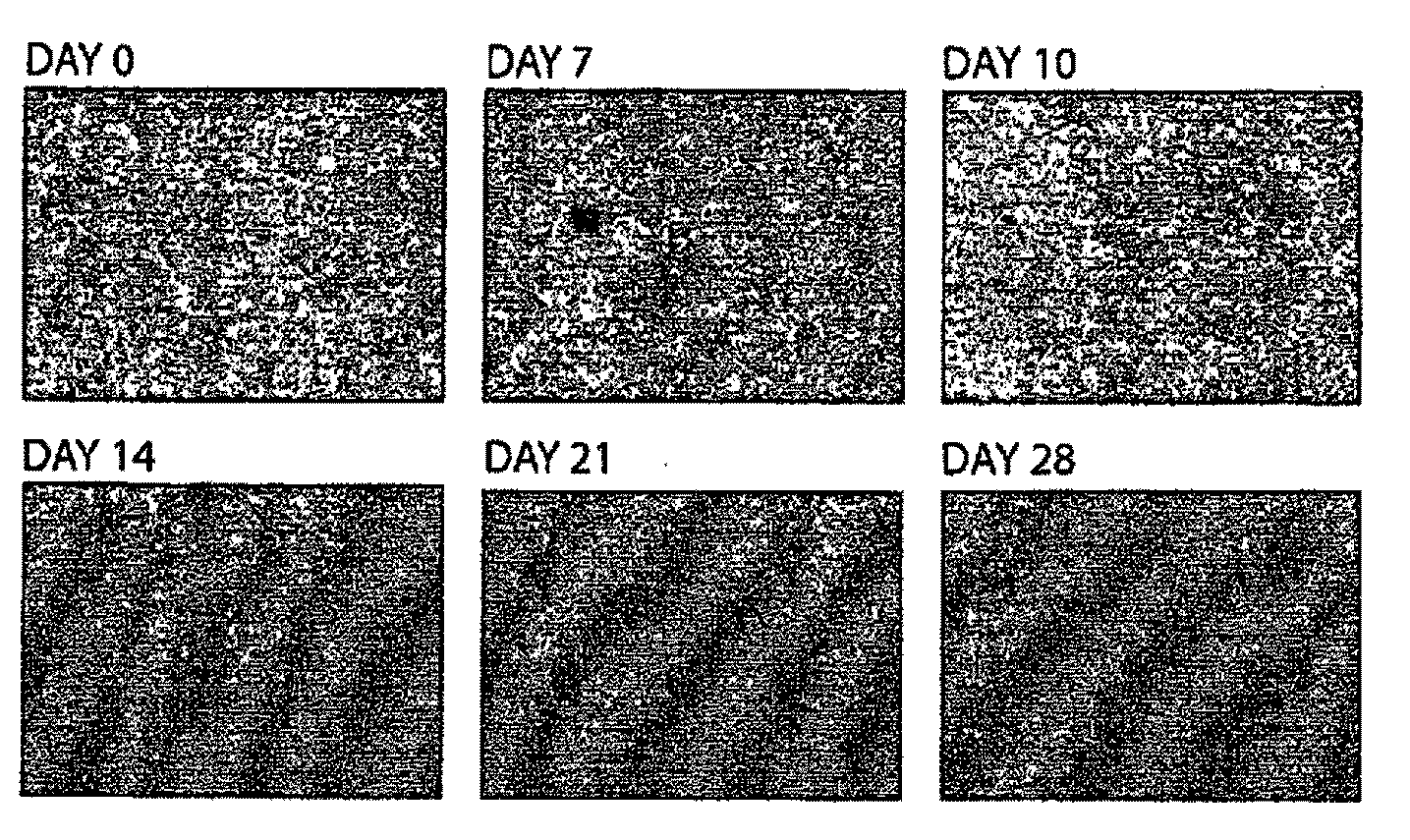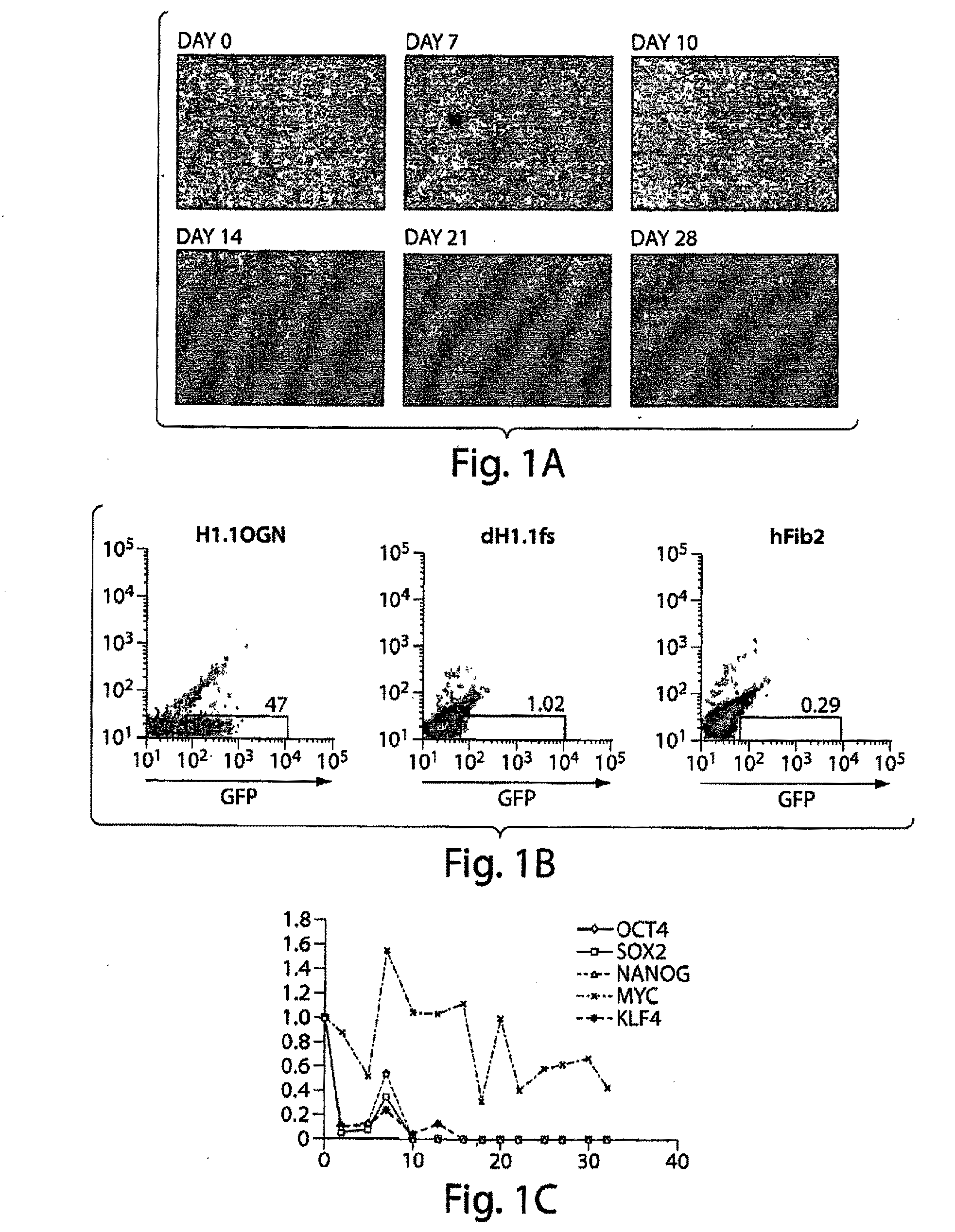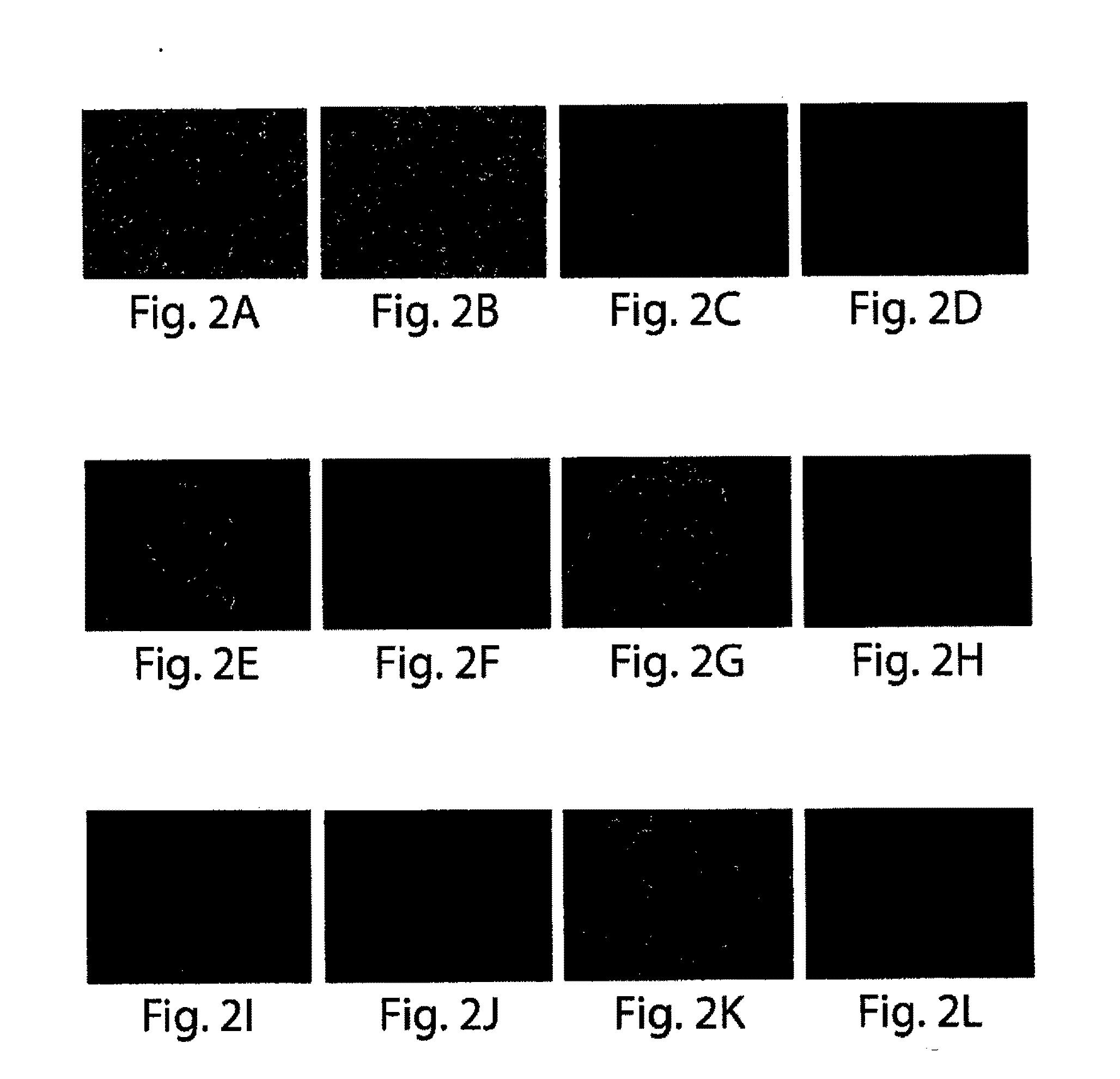Method to produce induced pluripotent stem (IPS) cells from non-embryonic human cells
a technology of human stem cells and ips, which is applied in the field of human pluripotent stem cells, can solve the problems that cells cannot be generated harboring such mutations, and achieve the effect of reducing the number of cells
- Summary
- Abstract
- Description
- Claims
- Application Information
AI Technical Summary
Benefits of technology
Problems solved by technology
Method used
Image
Examples
example 1
Methods
[0177]Cell culture. H1.1 hES cells expressing GFP and Neo integrated into the OCT4 locus (H1.1OGN) were cultured in standard hES cell culture medium (DMEM / F12 containing 20% KOSR, 10 ng / ml of human recombinant bFGF, 1×NEAA, 5.5 mM 2-ME, 50 units / ml penicillin and 50 μg / ml streptomycin). H1.1OGN cells were split into differentiation medium (DMEM containing 15% IFS, 1 mM sodium pyruvate, 4.5 mM monothiolglycerol, 50 μg / mL ascorbic acid, 200 μg / mL iron-saturated transferrin, and 50 units / ml penicillin and 50 ug / ml streptomycin) for 4 weeks, with passaging every 3 to 4 days with 0.25% trypsin / EDTA. Differentiated H1.1OGN fibroblasts (dH1.1fs) were maintained in alpha-MEM containing 10% IFS. hFib2, MRC5 (purchased from ATCC), and 33Y (PT 2501, purchased from Lonza) were cultured in alpha-MEM containing 10% IFS.
Retroviral production and hiPS cell induction. Human OCT4, SOX2, and KLF4 were cloned by inserting cDNA produced by PCR into EcoRI and XhoI sites in pMIG vector (Van Parijs ...
example 2
Abstract
[0187]Pluripotency pertains to the cells of early embryos that can generate all of the tissues in the organism. Embryonic stem cells are embryo-derived cell lines that retain pluripotency and represent invaluable tools for research into the mechanisms of tissue formation. Recently, murine fibroblasts have been reprogrammed directly to pluripotency by ectopic expression of four transcription factors (Oct4, Sox2, Klf4 and Myc) to yield induced pluripotent stem (iPS) cells. Using these same factors, we have derived iPS cells from fetal, neonatal and adult human primary cells, including dermal fibroblasts isolated from a skin biopsy of a healthy research subject. Human iPS cells resemble embryonic stem cells in morphology and gene expression and in the capacity to form teratomas in immune-deficient mice. These data demonstrate that defined factors can reprogramme human cells to pluripotency, and establish a method whereby patient-specific cells might be established in culture.
Me...
example 3
Introduction
[0200]Human embryonic stem cells isolated from excess embryos from in vitro fertilization clinics represent an immortal propagation of pluripotent cells that theoretically can generate any cell type within the human body (Lerou et al., 2008; Murry and Keller, 2008). Human embryonic stem cells allow investigators to explore early human development through in vitro differentiation, which recapitulates aspects of normal gastrulation and tissue formation. Embryos shown to carry genetic diseases by virtue of preimplantation genetic diagnosis (PGD; genetic analysis of single blastomeres obtained by embryo biopsy) can yield stem cell lines that model single gene disorders (Verlinsky et al., 2005), but the vast majority of diseases that show more complex genetic patterns of inheritance are not represented in this pool.
[0201]A tractable method for establishing immortal cultures of pluripotent stem cells from diseased individuals would not only facilitate disease research, but als...
PUM
| Property | Measurement | Unit |
|---|---|---|
| compositions | aaaaa | aaaaa |
| morphology | aaaaa | aaaaa |
| fibroblast-like | aaaaa | aaaaa |
Abstract
Description
Claims
Application Information
 Login to View More
Login to View More - R&D
- Intellectual Property
- Life Sciences
- Materials
- Tech Scout
- Unparalleled Data Quality
- Higher Quality Content
- 60% Fewer Hallucinations
Browse by: Latest US Patents, China's latest patents, Technical Efficacy Thesaurus, Application Domain, Technology Topic, Popular Technical Reports.
© 2025 PatSnap. All rights reserved.Legal|Privacy policy|Modern Slavery Act Transparency Statement|Sitemap|About US| Contact US: help@patsnap.com



